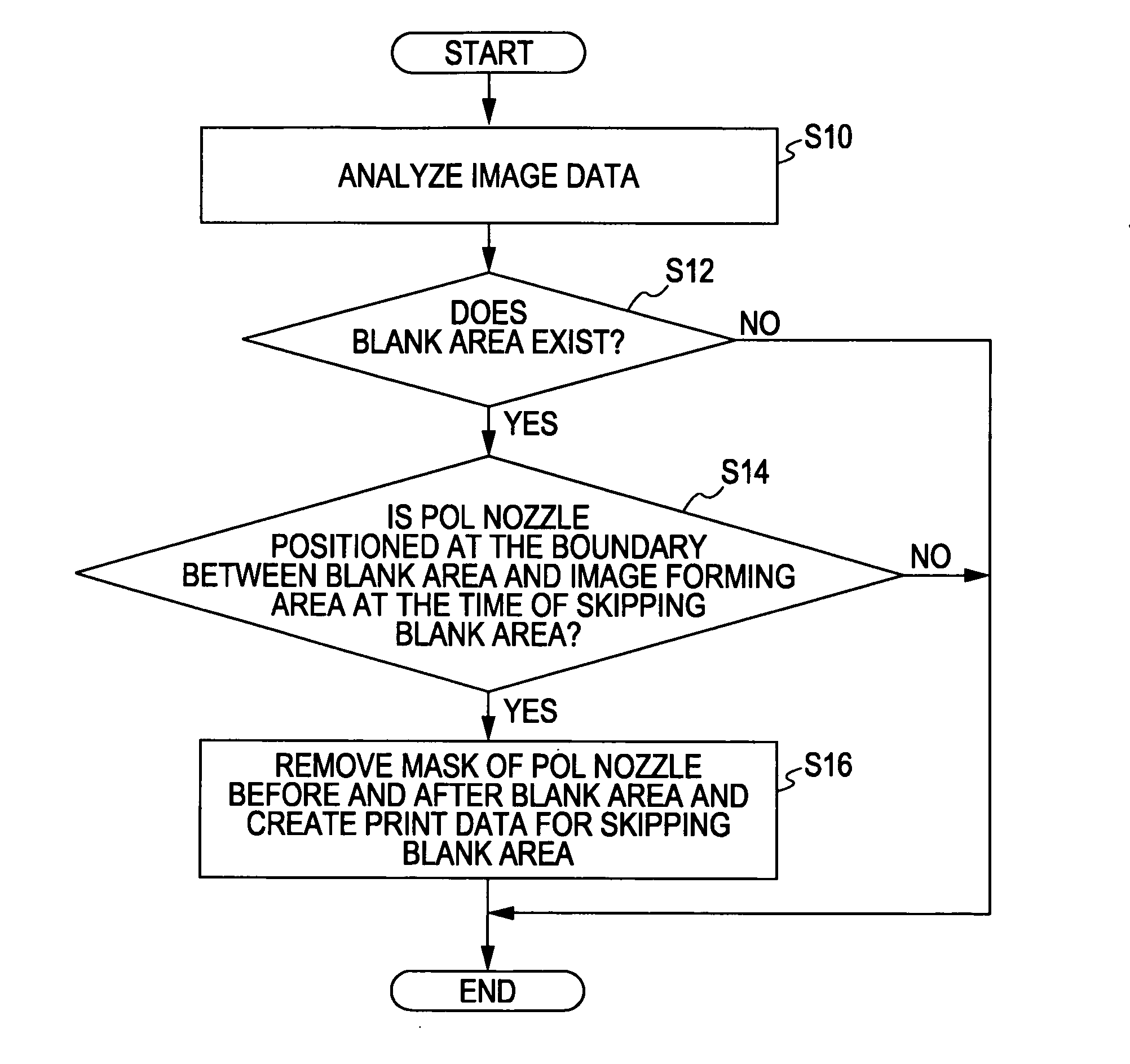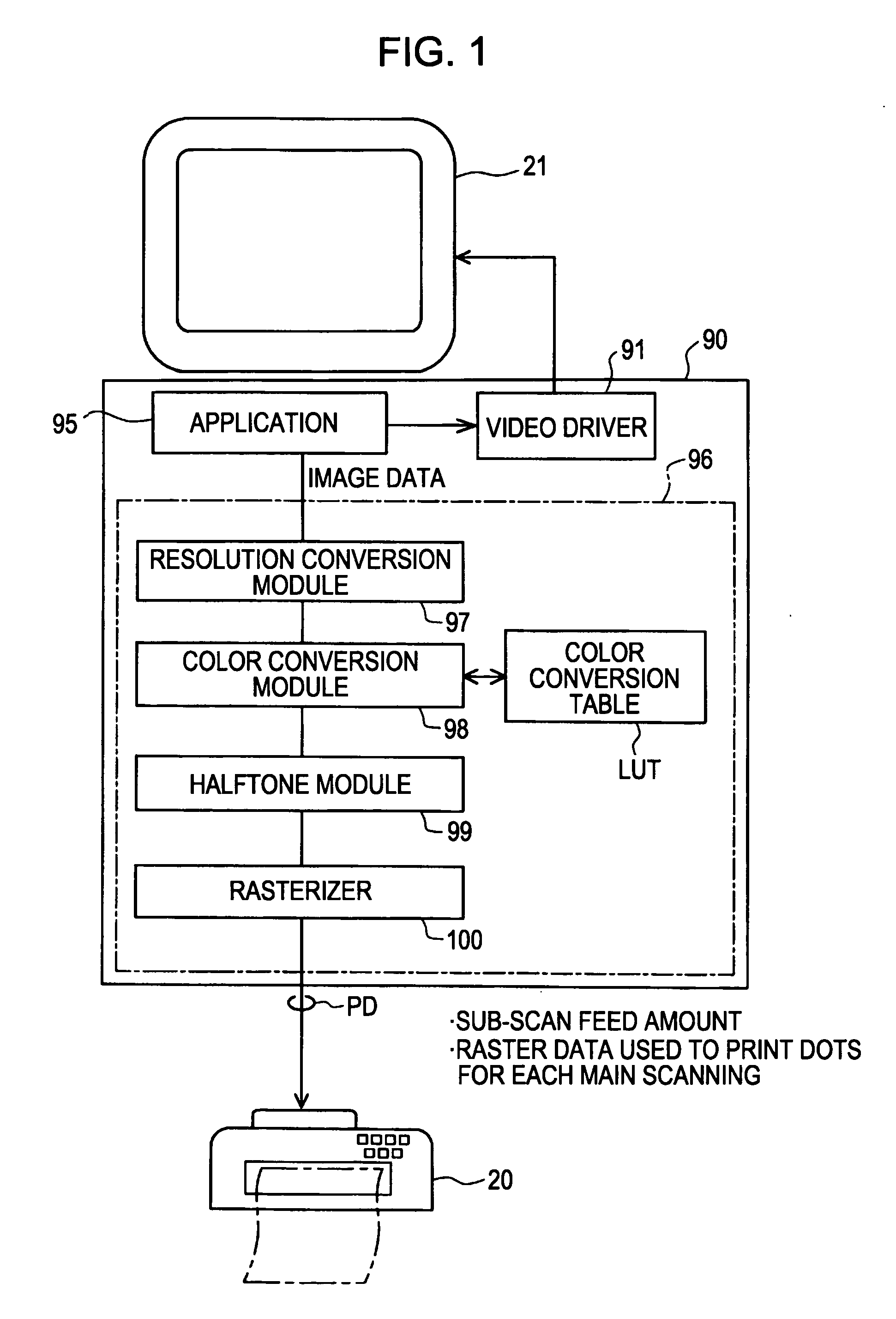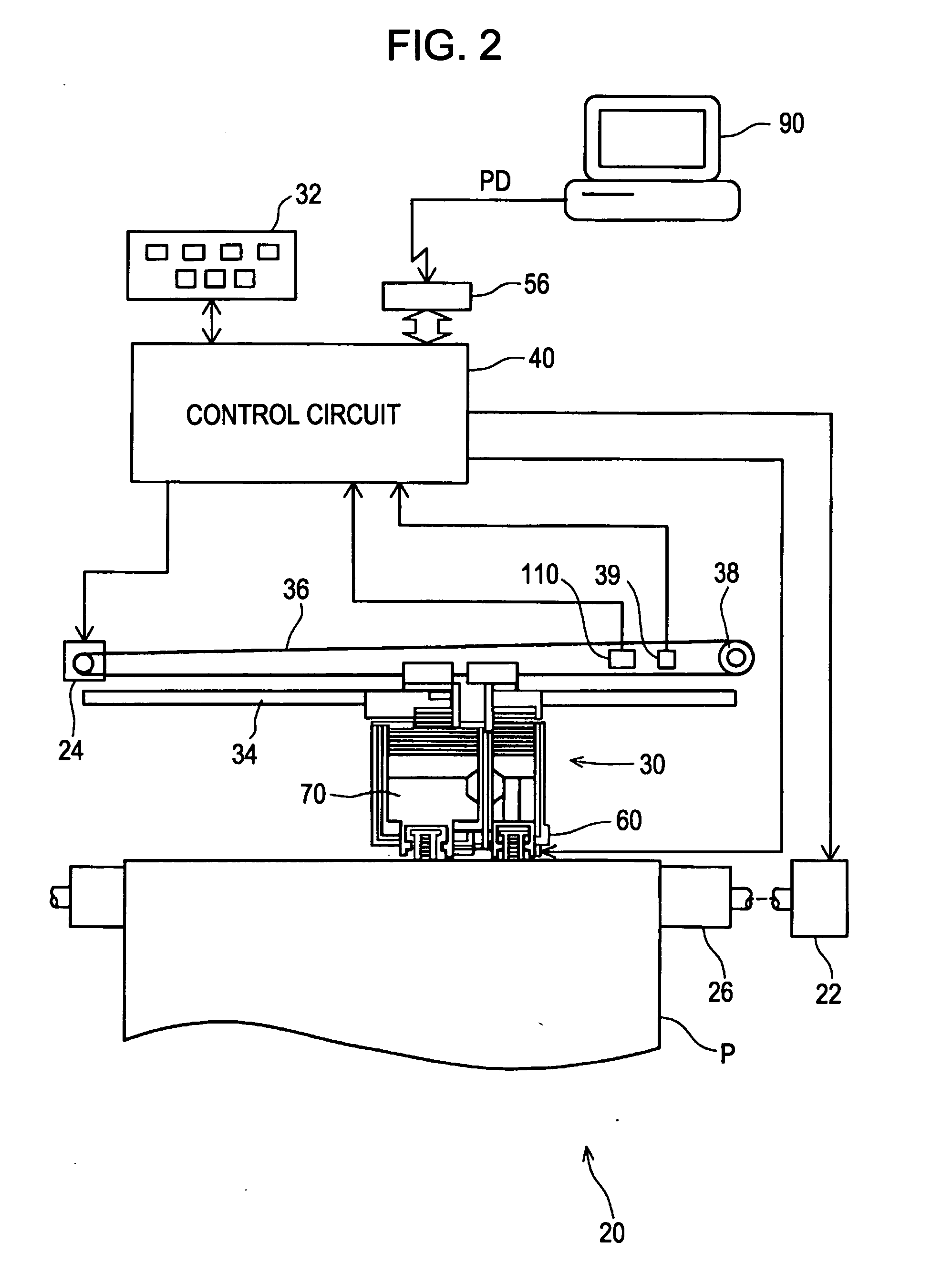Liquid ejecting apparatus and liquid ejecting method
- Summary
- Abstract
- Description
- Claims
- Application Information
AI Technical Summary
Benefits of technology
Problems solved by technology
Method used
Image
Examples
first example
A. First Example
A1. Configuration of Printing System
[0028]FIG. 1 is a block diagram illustrating a configuration of a printing system according to a first example of the invention. The printing system includes a computer 90 and a color printer 20. The combination of printer 20 and computer 90 can be called a “liquid ejecting apparatus” in a broad sense. Alternatively, a program, which is installed on the printer 20 and the computer 90 so as to function as a printer driver, may be called the liquid ejecting apparatus in a broad sense. A printer that has a printer driver function may be called the liquid ejecting apparatus.
[0029]In the computer 90, an application program 95 is carried out under a predetermined operating system. The operating system contains a video driver 91 or a printer driver 96 incorporated therein, and the application 95 outputs print data PD to be transmitted to the printer 20 with the aid of such a driver. The application program 95 having a function of image re...
second example
B. Second Example
[0071]In second example, transport of a printing paper is controlled so as to position a nozzle, which is not masked, above the boundary between the blank area and the image forming area in cancellation of the POL control at the time of the blank skip control when an image as a printing target includes a blank area.
B1. Printing Process
[0072]FIG. 10 is an explanatory diagram explaining cancellation of POL control at the time of applying a blank skip process according to a second example. In FIG. 10, solid-line circular marks including numerals of the printing head 28 denote nozzles, the numerals denote paths. An image 700 denotes an image represented by image data to be printed, and an image 710 denotes an image obtained by printing the image 700 on a printing paper. Solid-line circular marks including numerals in the image 710 correspond to pixels of the image 710. The numerals in the circular marks denoting the pixels denote paths in which the pixels are formed. Th...
PUM
 Login to View More
Login to View More Abstract
Description
Claims
Application Information
 Login to View More
Login to View More - R&D
- Intellectual Property
- Life Sciences
- Materials
- Tech Scout
- Unparalleled Data Quality
- Higher Quality Content
- 60% Fewer Hallucinations
Browse by: Latest US Patents, China's latest patents, Technical Efficacy Thesaurus, Application Domain, Technology Topic, Popular Technical Reports.
© 2025 PatSnap. All rights reserved.Legal|Privacy policy|Modern Slavery Act Transparency Statement|Sitemap|About US| Contact US: help@patsnap.com



